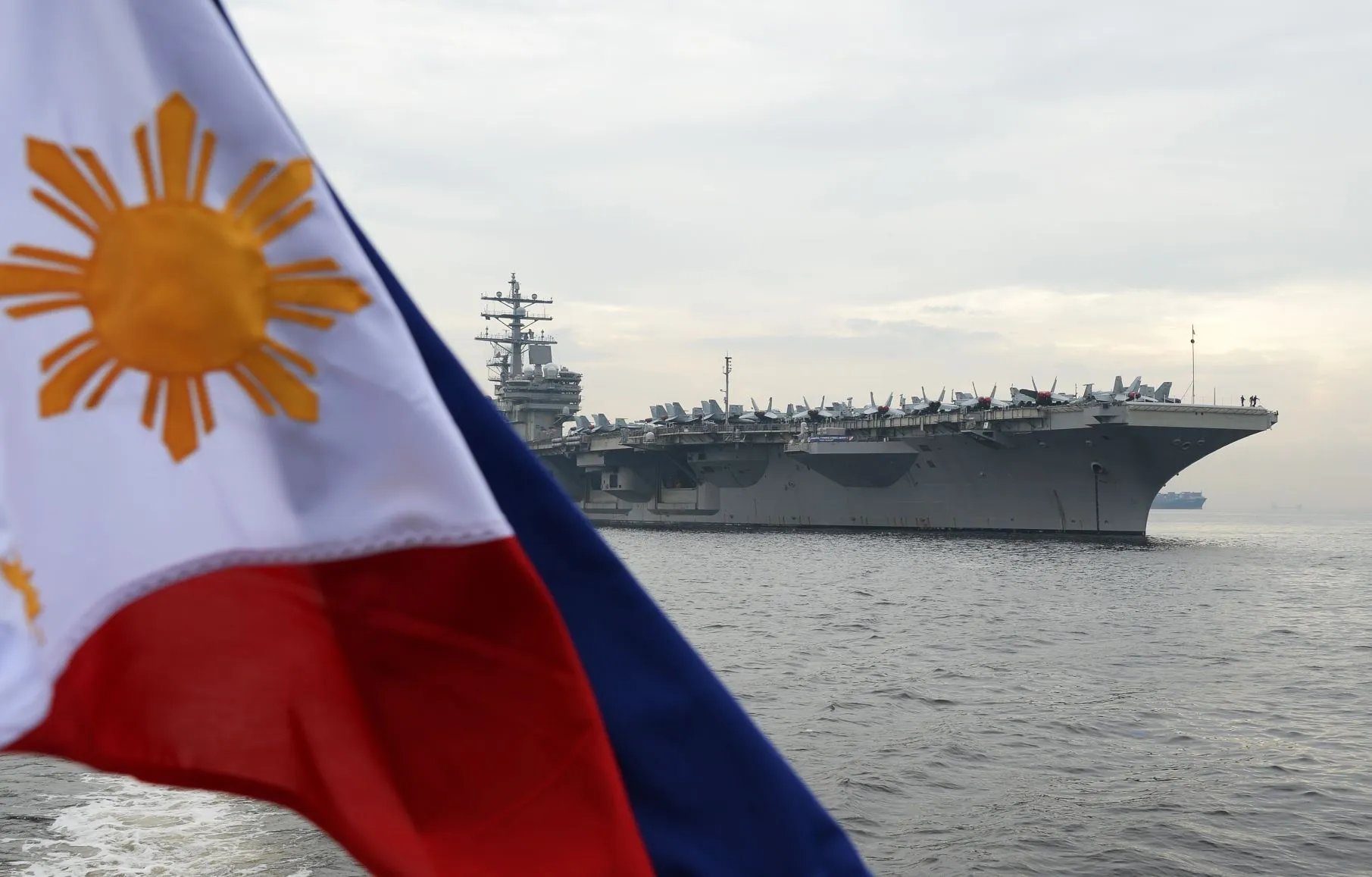
While the Philippines assesses maritime navigation to draw up tough policies to secure sovereignty from foreign aggression, it has to diversify naval diplomacy and find alternative options to resolve the puzzling conundrum in the West Philippine Sea — a nominal contested area in the larger South China Sea dispute. This is particularly important in its pursuit of the three-stage demands of its
armed forces modernisation programme set to be achieved by 2028.
India and China are two Asian naval juggernauts that are competing for economic networks and strategic maritime advantages in the newly-defined Indo-Pacific region, which is in the neighbourhood of the Philippines. There are predictions that there will be force projections by New Delhi and Beijing in a newly-emerging world order that compares and contrasts the hegemonic profitability of the two contending superpowers in the future.
The Philippines shares the same experience as it currently confronts a maritime and territorial dispute with China in the contested South China Sea.
Embattled over the pursuit of greatness, their ideological differences and economic models have certainly influenced the respective ascents of India and China in the current multiplex global environment. These Asian giant nation-states have had tensions over the McMahon Line border. This Sino-Indian border dispute, erupting to actual war in 1962, has also led to multiple skirmishes between both camps in 2020. The Philippines shares the same experience as it currently confronts a maritime and territorial dispute with China in the contested South China Sea.
Although the United States is Manila’s longest treaty ally, it has recently
renewed its recognition of the contentious Visiting Forces Agreement (VFA). This has reestablished the confidence lost between the two allies, which was caused by China’s aggressive wolf-warrior diplomatic efforts amid the Philippines’ flip-flopping foreign policy under President Rodrigo Duterte’s preferential treatment to Beijing, rather than Washington, during the COVID-19 pandemic.
The Philippines and the United States have had nine defence treaties, agreements, and other instrumentalities since the 1934 Tydings-McDuffie Act that provided for the retention of American naval reservations and fuelling stations in the Philippines after its independence from the former coloniser. The most controversial one amongst them all is the 1998 VFA that governs the presence of US troops in the Philippines,
which was almost abrogated twice under the Duterte administration following the cancellation of the US visa of a senator, who was a friend of Duterte’s and a collaborator in his failed flagship policy against drugs.
It was also seen as a litmus test and a wake-up call for the Joe Biden administration, as Washington started to soul search and then improved its friendship with Manila.
The VFA suffered a year of limbo
renewed its recognition of the contentious Visiting Forces Agreement (VFA), to the Malacañan Palace on 31 July 2021 amidst the threat to scrap the military pact. It was viewed as Duterte’s balancing act despite his five-year pivot to Beijing, even if the China threat still undermines the national interest and sovereignty of Manila. It may also be his way of rehearsing political theatrics as he conscientiously plays his cards given an avowed political comeback as the Vice President for the 2022 presidential elections.
It was also seen as a litmus test and a wake-up call for the Joe Biden administration, as Washington started to soul search and then improved its friendship with Manila. Otherwise, the damage would have further cost American interest in the South China Sea. During Duterte’s final
State of the Nation Address to the Congress on 26 July 2021, the Filipino populist leader pronounced that he has not closed the door on diplomatic efforts with the Congress, but that he is indebted to the Chinese President Xi Jinping for Beijing’s support during the COVID-19 contagion. In other words, the burden of proof that Duterte’s announcement has repaired ties with Washington has yet to be seen while the US needs to double its effort as China enjoys preferential treatment under his regime.
While cooperation of nations is seen as a result of foreign policy of the concerned nations, the Philippines’ foreign policy represents the defence policy of a nation that is dictated by, amongst other things, national aims and values, which are key factors in influencing the national interest.
Other than the United States, the Philippines has established alliances with like-minded countries such as Indonesia, Malaysia, South Korea, Japan, India, Australia, and Russia. Annually, close to 20 unilateral, bilateral and multilateral naval exercises are conducted with these allies. The importance of these maritime exercises is made more significant in light of the tensions resulting from conflicting territorial claims in the South China Sea and how effectively Beijing achieves an upper hand in the Philippine-claimed West Philippine Sea.
While cooperation of nations is seen as a result of foreign policy of the concerned nations, the Philippines’ foreign policy represents the defence policy of a nation that is dictated by, amongst other things, national aims and values, which are key factors in influencing the national interest.
In December 2020, French shipbuilder Naval Group announced plans to open an office in Manila in 2021 while the archipelagic Southeast Asian nation remains to be one of the weakest armed forces in Asia and still struggles to cement its strategic position as a middle power in the region.
Manila’s modernisation programme
Since the 1950s, the Philippines had been planning to acquire submarines for the Philippine Navy. In 2010, the navy revealed future plans to acquire submarines as part of a follow-up plan to the ongoing 15-year 90 billion pesos Armed Forces of the Philippines’ (AFP) modernisation programme. Manila’s territorial dispute with Beijing, no doubt, was a key motivator for the plan and gave some urgency on the acquisition. It has been approved as it is a priority upgrade of the navy’s modernisation plan. Although possessing submarines will not totally achieve deterrence to Chinese maritime power, but at least, it can be considered as a showcase for conventional deterrence capability as ideal sea denial assets.
But the practicality of purchasing submarines became problematic as it considered the acquisition of mini submarines and second-hand submarines or a phased submarine plan aimed at addressing China’s grey zone strategy in the South China Sea and threats of underwater warfare. Development of submarine warfare capability to safeguard its own strategic interest and security in the maritime waters of Southeast Asia hit current cooperation in international naval engagement including submarine salvage and rescue operation.
Manila’s territorial dispute with Beijing, no doubt, was a key motivator for the plan and gave some urgency on the acquisition.
The limited resources of the AFP and other affiliate law enforcement agencies also pose daunting challenges in securing the vast Philippine archipelago. For one, the Philippine Navy is responsible for the naval defence of the seabed and other submarine areas. In reality, the country’s current naval assets and capabilities are disproportionate to the requirements of securing an island nation especially in the face of perceived threats emanating from our continuing maritime and territorial insecurities in the West Philippine Sea.
From a macro perspective, the Philippine lacks air capability, sea and air transport, command and control, communications, computers, intelligence, surveillance and reconnaissance. These investments are required for the AFP to achieve a certain credible fighting force. This comes despite Philippine investments in modernisation such as those of the planned acquisition of BrahMos–India’s supersonic missile that is a short-range ramjet supersonic cruise missile that can be launched from submarines, ships, aircraft, or land.
After five decades, the Philippines is still dependent on major powers for its defence capability development. Data shows that from 145 projects in the first and second horizon of the AFP modernisation programme, 137 dealt on capability, material and technology development. The acquisition of small arms was mostly developed by local defence industry.
The Defense Planning Guidance from 2022-2027 adheres that the AFP shall continue the titling of military camps and bases. It shall recognise strategic areas that can be declared, expropriated, or acquired as military reserves or assets. But based on the AFP Transformation Roadmap 2028, one of the strategic objectives of the AFP modernisation programme is to pursue the armed forces’ long-term development projects in collaboration with external stakeholders that support the bases. It shall increase the number of development projects through Public-Private Partnership Support Arrangements. But the development of a naval operating base requires unique technical specifications for facility and support requirements.
The Philippine Navy under the leadership of the progressive Armed Forces of the Philippines should dream for aspirational changes and become a strong defence force in the region.
The Philippines’ maritime community should continue to bank on the benefits of sophisticated technologies available for land, air, sea, and cyber-space. It brings forth numerous advantages, though in some instances, over-reliance on this advanced system can lead to the industry’s increased vulnerability. But this should anchor on educating and encouraging the best practice of celestial navigation at the maritime and naval academies. It should educate uniformed sailors on big data networks needed for its strategic function. Big data, certainly, is characterised by volume, variety, and velocity.
Is it achievable? Definitely, as long as the transformational road to military modernisation shall be conscientiously funded and operationalised until the Philippines will elect a new president next year. The Philippine Navy under the leadership of the progressive Armed Forces of the Philippines should dream for aspirational changes and become a strong defence force in the region. Manila must resolve its protracted maritime insecurities for steady aspirational security for the sake of its sovereignty and territorial integrity.
The views expressed above belong to the author(s). ORF research and analyses now available on Telegram! Click here to access our curated content — blogs, longforms and interviews.



 While the Philippines assesses maritime navigation to draw up tough policies to secure sovereignty from foreign aggression, it has to diversify naval diplomacy and find alternative options to resolve the puzzling conundrum in the West Philippine Sea — a nominal contested area in the larger South China Sea dispute. This is particularly important in its pursuit of the three-stage demands of its
While the Philippines assesses maritime navigation to draw up tough policies to secure sovereignty from foreign aggression, it has to diversify naval diplomacy and find alternative options to resolve the puzzling conundrum in the West Philippine Sea — a nominal contested area in the larger South China Sea dispute. This is particularly important in its pursuit of the three-stage demands of its  PREV
PREV


